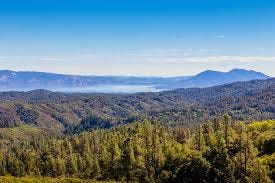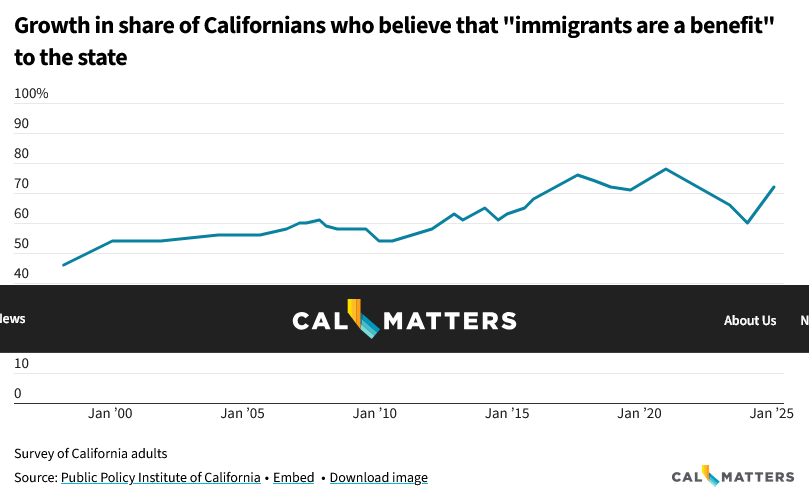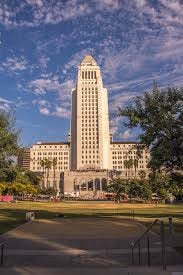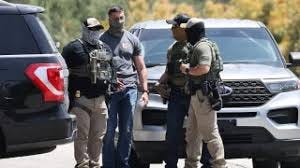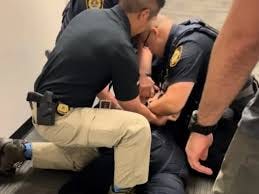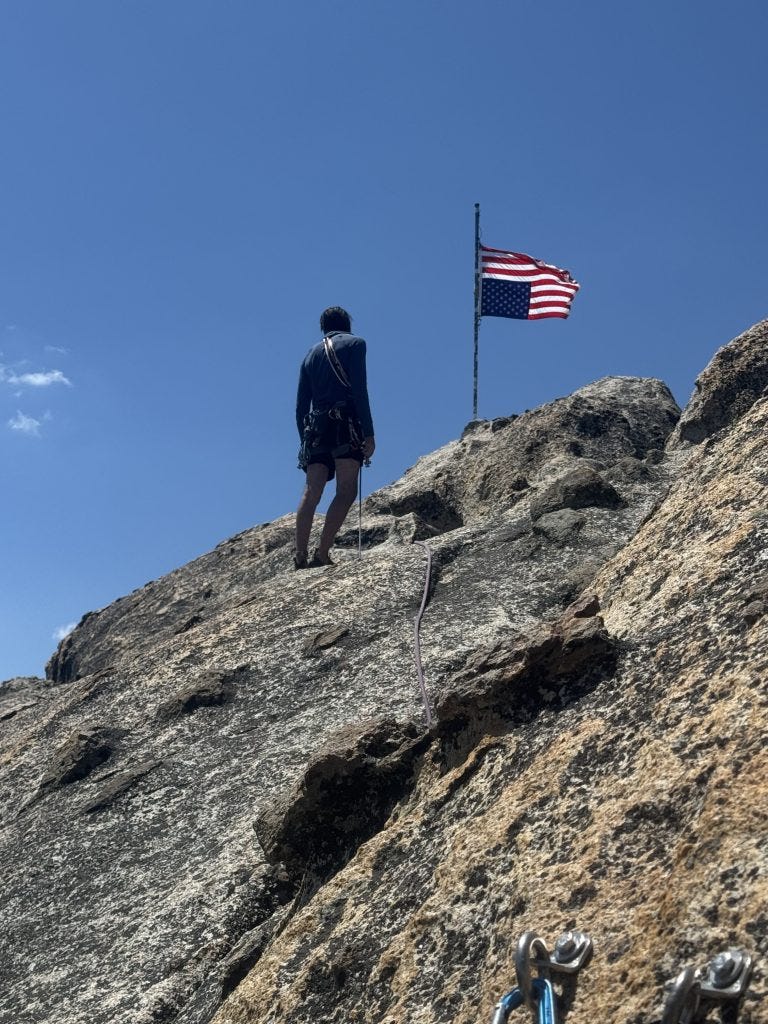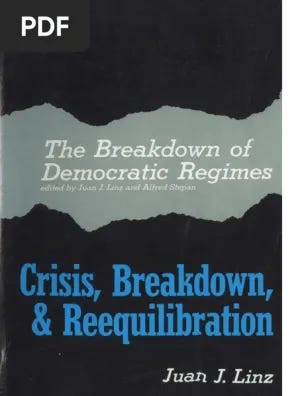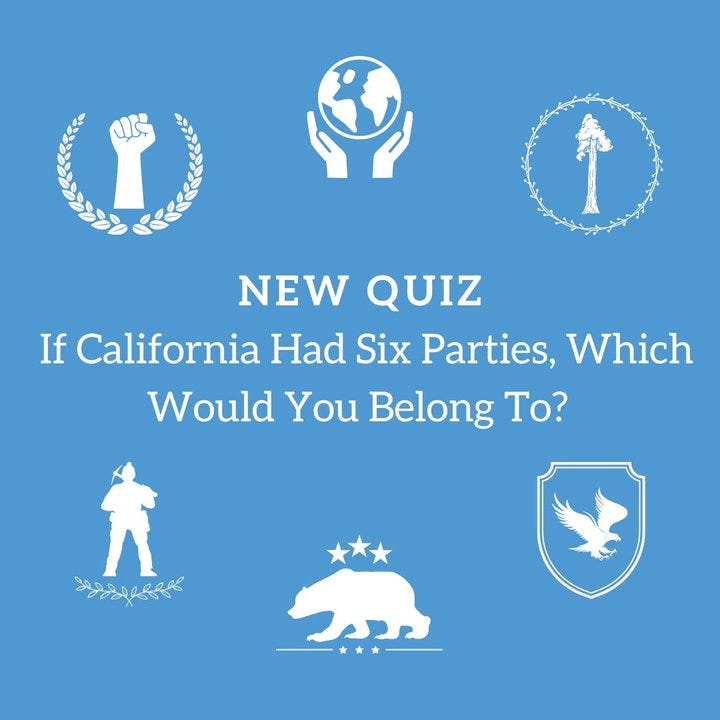The third Independent California Poll is complete! We’ll release results as we analyze the data.
How would you vote?
ICI will hold a SPECIAL ZOOM EVENT for our donors (including paid Substack subscribers), to discuss the results of the poll.
Save the date! Saturday, July 12
Presentation and Q&A: 2:00 - 3:30
Optional open discussion: 3:30 - 4:00
This will be the first in a series of premium events bringing together a community of like-minded Californians, as we explore the future of our great nation-state.
Goodbye to our national forests?
Can local police arrest out-of-uniform federal agents?
Save the date! ICI donor event coming July 12
SELLING PUBLIC LANDS
Trump administration rescinds ‘Roadless Rule’ that protects 58 million acres of national forests
Hayley Smith, LA Times
The USDA, which oversees the U.S. Forest Service, said it will eliminate the 2001 “Roadless Rule” that established lasting protection for specific wilderness areas within the national forests. Research has found that building roads can fragment habitats, disrupt ecosystems, and increase erosion and sediment pollution in drinking water, among other potentially harmful outcomes.
In a statement, USDA Secretary Brooke Rollins described the rule — which applies to about 30% of national forestland — as outdated and overly restrictive.
More than 40 states are home to areas protected by the rule. In California, that encompasses about 4.4 million acres across 21 national forests, including the Angeles, Tahoe, Inyo, Shasta-Trinity and Los Padres national forests, according to the USDA website.
These 4 million acres of California forests could lose protection. Here’s what Trump’s ‘roadless rule’ repeal could do
Rachel Becker, CalMatters
California has more national forest acreage than any state other than Alaska. At stake are the roadless reaches of wild areas throughout the state: From dense coastal forests in the far north, to alpine conifer forests in the Sierra Nevada, to Southern California’s great expanses of brush in the Cleveland, San Bernardino and Angeles national forests.
The Department of Agriculture has not said how it plans to rescind the rule, and how long the effort is expected to take. Reversing federal rules usually is a long process, requiring publication in the Federal Register and a long public comment period. The agriculture department did not respond to an inquiry from CalMatters.
Conservationists call this a ploy to further unfetter logging by an administration that called for an “immediate expansion of American timber production” and ordered drastic cuts to the very agencies that study and fight fires.
“This move is the most irresponsible, because opening up these forests to logging roads and logging is going to degrade them. It’ll actually increase wildfire risks. It’ll harm numerous species and harm watersheds,” said Randi Spivak, public lands policy director at the Center for Biological Diversity. “It’s just a big handout to timber companies.”
ICE CONTROVERSY RATCHETS UP
From save our state to sanctuary, California’s immigration views have shifted dramatically
Ben Christopher and Mikhail Zinshteyn, CalMatters
Part of that sweeping change can be explained by the state’s shifting demographics. If the U.S. is the land of immigrants, California is doubly so. More than a quarter of the state’s population was born abroad, and almost half of California’s children were born to an immigrant parent. More than half of California’s immigrants are naturalized U.S. citizens.
And California’s immigrant community is diverse: 49% are originally from Latin American countries and 41% from Asia. For the past decade, more immigrants from Asia have entered California than from Latin America.
Both chambers of the state Legislature have elected Latino leaders — Assembly Speaker Robert Rivas of Salinas and Senate President Pro Tem-elect Monique Limón of Santa Barbara. In the early 1990s, the count of Latinos in the Legislature bounced around the single digits. Today, there are a combined 42 members in the Democratic and Republican parties’ respective Latino caucuses out of 120 members.
That rise in political power has translated to changes in policy.
The state has expanded Medi-Cal, the state’s health insurance program for low-income Californians and those with disabilities, to all immigrants without legal status. Newsom signed successive expansions into law starting in 2020.
Where Prop. 187 was authored to deprive undocumented immigrants of social services, California’s Medi-Cal expansion was its antithesis.
The generational impact of that ballot measure was demonstrated in 2010, when immigrants were mobilized to vote and shift the state further to the left.
L.A. city leaders look to file lawsuit over ‘unconstitutional’ immigration enforcement
David Zahniser and Rachel Uranga, LA Times
Seven council members signed a proposal asking City Atty. Hydee Feldstein Soto to prioritize “immediate legal action” to protect the civil rights of Angelenos, arguing that such a step is needed to keep their constituents from being racially profiled or unlawfully detained.
The proposal, which was co-authored by [Councilmember Katy] Yaroslavsky and Councilmember Ysabel Jurado, now heads to three council committees for consideration.
The city’s potential legal filing could be modeled after a federal lawsuit filed by United Farm Workers in the state’s Central Valley earlier this year, Yaroslavsky said.
In that case, United Farm Workers alleged that border patrol agents stopped, detained and arrested dozens of people of color who appeared to be farm workers or day laborers, “regardless of their actual immigration status or individual circumstances.”
In April, a federal judge ordered federal authorities to halt illegal stops and warrantless arrests in the Central Valley.
Federal agents thought they could stay at LA-area hotels. Communities are trying to make sure they can’t
Phoenix Tso and Elizabeth Chou, LA Public Press
It started as an “ICE sighting” on the morning of June 8. Someone had sent in a photo of federal immigration vehicles parked at the AC Hotel in Pasadena that circulated in rapid response group chats and on social media.
The group that had gathered wanted to drive out the federal agents. The protest resulted in immigration enforcement vehicles driving out of the hotel that evening to the cheers of protesters yelling “fuera ICE.”The protest outside the AC Hotel to drive out ICE is likely the first of its kind and has opened a new front of resistance against the immigration raids that have roiled LA County since June 6.
People now frequently turn out in the evenings at hotels where ICE agents are believed to be staying, to bang on pots and pans and play sounds on bullhorns to prevent the agents from having a good night’s sleep. They also hope that the disruption will put pressure on hotel management to turn immigration officials away.
Immigration arrests by ‘masked and unidentified individuals … are abductions,’ says Huntington Park mayor
City News Service, Orange County Register
“These are not lawful arrests. These are abductions,” Flores said. “For more than a week, we have witnessed families being torn apart, children left without parents, and residents vanishing without explanation. Men dressed in tactical gear, operating unmarked vehicles without displaying credentials or agency affiliation, have infiltrated our neighborhoods in direct violation of our community’s values, civil rights and the basic principles of due process.
“… I am calling for the immediate cessation of these raids and for the Huntington Park Police Department to begin verifying the identities and authority of any individuals conducting such operations within city limits,” the mayor’s statement added.
Flores’ words came as the U.S. government continues to conduct immigration enforcement raids across Los Angeles County in a series of raids that began June 6 and have drawn daily protests from residents and Democratic officials.
California police are illegally sharing license plate data with ICE and Border Patrol
Khari Johnson and Mohamed Al Elew, CalMatters
Law enforcement agencies across Southern California violated state law more than 100 times last month by sharing information from automated license plate readers with federal agents, records show.
The Los Angeles Police Department and sheriff’s departments in San Diego and Orange counties searched license plate readings on behalf of Immigration and Customs Enforcement and Customs and Border Protection, according to a database of queries obtained by anti-surveillance group Oakland Privacy and provided to CalMatters.
Under a 10-year-old California measure, known as Senate Bill 34, state law enforcement agencies are barred from sharing license plate reader data with out-of-state public agencies or federal entities. The law has been routinely violated; civil liberties groups in 2023 found that 71 California law enforcement agencies had broken it. Later that year, Attorney General Rob Bonta issued an advisory providing police with specific guidance on how to comply with the law.
In addition to detailing the prohibition on out-of-state sharing, Bonta noted that operators of license plate readers must state the purpose of their use every time they access the information.
Among the 10 agencies that conducted searches on behalf of ICE, six are in Los Angeles County and nine are in Southern California. Two agencies, the sheriff’s departments for Orange and San Diego counties, carried out searches on the behalf of Customs and Border Protection or the Border Patrol.
“This is a big deal, it’s part of the problem, and we need the attorney general’s office to start litigating,” said Brian Hofer, former chair of the privacy commission for the City of Oakland.
Hofer said cities can put all the sanctuary policies on the books that they want, but if they’re not shutting down the data sharing between local authorities and federal agencies like ICE, those protections are meaningless.
‘Who are these people?’ Masked immigration agents challenge local police, sow fear in L.A.
Nathan Solis and Richard Winton, LA Times
In a video posted to Instagram from Pasadena, a suspected federal agent is seen exiting a Dodge Charger at an intersection and pointing his gun at members of the public.
In the video, a person walks up to the back of the Dodge Charger and appears to take a photo of the license plate. That’s when the driver gets out of the vehicle and points a gun at the person who was behind the vehicle, then toward another person outside of the video frame. The word “Police” is visible on the driver’s vest, along with a badge on his hip. After a few seconds, the man puts the gun away and gets back into the car as bystanders shout at him. The man then activates the vehicle’s red and blue lights common to law enforcement vehicles and drives away.
Citizens shared the vehicle’s license plate on social media, which led to more questions than answers.
According to Pasadena officials, the vehicle’s license plate is a “cold plate,” or untraceable, which is typically used by law enforcement in undercover criminal operations.
“One question is this a law enforcement agent or someone pretending to be a law enforcement agent, and there is no good answer here,” Pasadena Mayor Victor Gordo told The Times. “[To] have a law enforcement agent draw his weapon and point it toward someone using their iPhone, and a crowd, is showing a lack of training and a lack of temperance in the use of force.”
Want to work for the best California independence think tank there is?
Please check out our Volunteer Jobs page and email director@ic.institute if you see a good fit!
SEIZING OF SENATOR PADILLA
Alex Padilla recounts his removal from DHS news conference in emotional Senate speech
Claudia Grisales, NPR
Padilla said he asked to attend and was escorted into the press conference by FBI and National Guard officials. As he tried to question Noem, another set of officials grabbed him and removed him from the room.
"You've seen the video. I was pushed and pulled, struggled to maintain my balance. I was forced to the ground. First on my knees and then flat on my chest, and was handcuffed and marched down a hallway repeatedly asking, 'Why am I being detained?'" Padilla recalled. "Not once did they tell me why. I pray you never have a moment like this."
The Department of Homeland Security initially accused Padilla of "disrespectful political theatre," charging that he did not comply with requests to back away. Secretary Noem said she and Padilla eventually spoke after the scuffle.
In his remarks Tuesday — his first on the Senate floor since the incident — Padilla said his detainment marked a turning point in what he described as the Trump administration's "undemocratic crackdown" on protest.
"At one point," Padilla said, "the United States Secretary of Homeland Security said that the purpose of federal law enforcement and the purpose of the United States military was to, quote, liberate Los Angeles from our governor and our mayor. To somehow liberate us from the very people that we democratically elected to lead our city and our state."
‘We’re all just a bunch of Josés’: Vance’s dig at Padilla is a new low
Gustavo Arellano, LA Times
For over a century, Americans have used Spanish first names as catchall slurs against Latinos. Mexican men were dismissed as violent Panchos and stupid Pedros. Latinas of all backgrounds have endured being typecast as a slutty Maria or subservient Lupe.
“José” was originally deployed against Puerto Ricans, according to the Historical Dictionary of American Slang. By the 1970s, because of the name’s ubiquity, racists had adopted it to describe all Latino men. The Social Security Administration lists José as the most common Hispanic name for boys over the last 100 years.
Vance’s misnaming of Padilla “was the perfect linguistic and class storm,” said San Diego State English professor William Nericcio, who has spent his career documenting the psychology behind anti-Latino racism in this country. “The vice president was proclaiming to Sen. Padilla, ‘Yeah, I know you. I don’t even remember your name. That’s how little you mean. You’re a José. You’re a nothing, a nobody, a dirty Mexican.’”
One question our poll is asking Californians right now:
California state law requires state and local government buildings to fly the California and American flags.
Do you think the law should be changed to make it optional to fly the American flag?
IN OTHER NEWS
Upside down U.S. flag displayed on mountain peak above Tahoe
Katelyn Welsh, Tahoe Daily Tribune
It’s unclear who placed the flag or how long it’s flown atop Flagpole Peak, which is visible from Meyers, Highway 50 and portions of Echo Lakes. Climbers Tadd Perkins and Nicholas Schwab initially spotted the flag on Flagpole Peak on their hike up to their climbing route.
Flagpole Peak lies within lands managed by the USDA Forest Service under the Lake Tahoe Basin Management Unit.
The presentation of an upside down flag for protest dates back at least 50 years and has been documented for both left and right dissent, including at the Jan. 6, 2021 U.S. Capitol riot and following the overturning of Roe v. Wade.
The U.S. Flag code outlining the occasion for an upside down flag falls under subsection 8, titled “Respect for flag,” stating: “The flag should never be displayed with the union down, except as a signal of dire distress in instances of extreme danger to life or property.”
The code is largely unenforceable, using phrases like “should” and “may.” A Supreme Court case in 1989, which ruled flag burning as protected free speech under the First Amendment, largely influenced the unenforceable nature of the code. It now largely acts a code of etiquette for properly displaying and handling the U.S. flag.
Q&A: Is this the end of U.S. democracy?
Expert Lucan Way says the country has entered a period of “competitive authoritarianism.”
Tom Kertscher, California Magazine, University of California
Lucan Way, P.h.D. ’01, is a distinguished professor of democracy at the University of Toronto and co-chair, with Steven Levitsky, P.h.D. ’99, of the editorial board of the Journal of Democracy. UC Berkeley political scientist M. Steven Fish has described them as “the Juan Linz and Alfred Stepan of their generation,” referring to the authors of the 1978 classic The Breakdown of Democratic Regimes.
He says: I don’t think the United States is a democracy right now. I think we’ve entered a period of what I call “competitive authoritarianism.” But I do think that the resources to revert back to democracy are definitely there. And I do not think it’s likely that the Republicans will be able to consolidate authoritarian rule.
Competitive authoritarianism is a term that Steven Levitsky and I came up with back in 2002 to describe mostly cases of new democracies that emerged in what political scientists call the third wave. And these are cases in which there are regular elections, the opposition is allowed to operate freely and openly, and sometimes the opposition wins elections, but in which there’s all sorts of abuse by the incumbents—harassment of media, [targeted] audits, defamation suits and the like.
Before this, almost all social scientific research suggested that a country that was as rich [and] with a democracy that has been around as long as the United States, basically had zero chance of collapsing, because there just aren’t any other equivalent cases. The United States is kind of sui generis in that sense.
Oftentimes people support authoritarianism because they see the opposition as a kind of existential threat. There’s a scholar by the name of Milan Svolik at Yale who’s done research on this that shows that even when people, in principle, support democracy, if they feel that the opposition is a threat to their way of life, they’re very happy to support authoritarian candidates.
Part of the reason why democracy has collapsed is because mainstream fact-based media has weakened. So, people need to start paying for subscriptions to whatever newspaper they like. They need to contribute to whatever party they think they want to win. They need to engage in protest activity, showing up at town halls. It is one of those situations where I think there needs to be resistance from all sides. Collective action becomes easier when everybody does a little bit.
Newsom vs. Trump: What to know about California’s lawsuit against the federal government
Sonja Sharp, LA Times
California’s June 9 suit makes two big legal claims:
that the unrest in L.A. was insufficient to justify the powers Trump invoked to quell it
that federalized troops were doing (or were likely to do) things they’re not allowed to in those circumstances.
In the court’s Juneteenth ruling, Judge Mark J. Bennett wrote that the Constitution and the U.S. Code gave the president broad authority to interpret the facts as he saw them.
But neither court has yet opined on California’s second major claim: that by assisting immigration raids, troops under Trump’s command violated the Posse Comitatus Act of 1878, which forbids soldiers from enforcing civilian laws.
On Tuesday, [District Court Judge] Breyer gave state attorneys the green light to start collecting evidence about troop activities “on the streets of communities in Southern California”, and to depose key officials, including ICE Enforcement and Removal Operations Field Office Director Ernesto Santacruz Jr. and Maj. Gen. Niave F. Knell.
Meanwhile, DOJ lawyers argued troops aren’t enforcing civilian law; and even if they were, that would be allowed under the statute; and even if it wasn’t, the Northern District of California has limited authority to say so.
The one thing we can say for sure is, if California wins, the Trump administration will appeal.
QUIZ: If California had six parties, which would you belong to?
The ProRep Coalition Team
In California, our nationalized two-party duopoly has manifested in a single-party monopoly; the Democratic Party has dominated our state legislature for 60 of the last 65 years. Yet, despite their decades-long majority, our legislature has consistently failed to adequately address Californians’ critical concerns – in particular, growing economic inequality, housing affordability, and homelessness.
Frustrated with Democrats, but still broadly too liberal for an increasingly conservative Republican Party, more Californians than ever believe more parties are needed (72%).
California rolls on with electric trucks, despite Trump’s roadblocks
Lawmakers are considering a bill that would give the Air Resources Board authority to regulate ports, rail yards, and warehouses. That would allow regulators to mandate strategies to advance the transition, like requiring facilities to install charging infrastructure. Several state programs underwrite some of the cost of electric trucks, which can cost about $435,000 — about three times the price of a diesel rig.
That’s not to say California isn’t fighting back. It plans to sue the Trump administration to preserve its right to set emissions standards. Losing that will make it “impossible” to ease the Valley’s pollution enough to meet air quality standards, said Craig Segall, a former deputy executive director of the Air Resources Board. “Advanced Clean Fleets and Advanced Clean Trucks arise out of some pretty hard math regarding what’s true about air pollution in the Central Valley and in California, which is that it’s always been largely a car and truck problem,” he said.
Even if the state loses the ability to regulate vehicle emissions and require electrification, Segall is confident market forces will push the transition forward. As China continues investing in the technology and developing electric big rigs, he said, companies throughout the rest of the world will need to do the same to stay competitive. He also said that trucking companies will see zero-emission trucks as an opportunity to lower maintenance and fueling costs. The Frito Lay factory in the Central Valley city of Modesto has purchased 15 Tesla electric big rigs.
California, don’t give in to Donald Trump. Defend transgender athletes | Opinion
McClatchy California Editorial Boards, San Luis Obispo Tribune
Allowing transgender athletes on girls teams has been controversial, even in liberal California where a “Save Girls Sports” movement has taken hold in many communities. In response to complaints about pitting girls against biological males, who tend to be bigger and stronger, CIF adjusted its rules for the track-and-field finals in Clovis to ensure girls would not be penalized if they finished behind a trans athlete. As a result, multiple medals were awarded in the high jump and triple jump after a transgender athlete won both events. That did not appease the Trump administration, which is demanding that California strip awards “misappropriated by male athletes competing in female competitions.”
CIF may not have devised a perfect solution, but California is working to address concerns about fairness and equity in sports. It should be allowed to do so without interference from an administration trying to bully states into complying with its transphobic agenda, which isn’t confined to keeping trans athletes off girls teams.
Allowing this administration to trample on the rights of a group of people — no matter how small that group may be — opens the door to further injustices.
ICYMI: ON OUR WEBSITE
Do California cities have to fly the American flag?
The not-so-subtle connection between ICI and ‘Uncle Patrick’s Secessionist Breakfast’
Texas v What? Debunking 5 big myths about secession
The High Price of Fear: California could defend itself for a fraction of the cost
Fire and Flood: Why California should control our own water system
Just 9 states make up more than half the U.S. population



